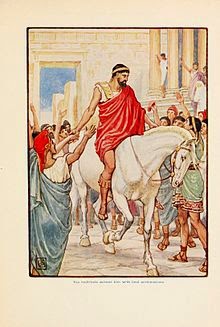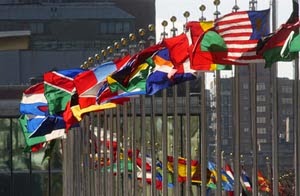 |
| Seal of Organization of American States |
The Ninth International Conference, which brought together 21 States in Bogotá, Colombia, in 1948, adopted the Charter of the Organization of American States, the American Treaty on Pacific Settlement ("Pact of Bogotá) and the American Declaration of the Rights and Duties of Man. The Economic Agreement of Bogotá, which was proposed to foster economic cooperation among the American states adopted at the same conference, but never took effect.
.svg.png) |
Motto:
"Democracy for peace, security, and development" |
In the same way that the OAS Charter, the Pact of Bogotá obliges the High Contracting Parties to resolve disputes between American States by peaceful means and lists a number of procedures to follow: good offices and mediation, investigation and conciliation, and arbitration.
 |
| Seal of Organization of American States Organisation des États Américains (French) Organização dos Estados Americanos (Portuguese) Organización de los Estados Americanos (Spanish). |
If a solution is not reached by the conciliation procedure established, the parties are entitled to appeal to the International Court of Justice. In fact, some controversies have reached this stage.
The American Declaration of the Rights and Duties of Man, adopted months before the Universal Declaration of Human Rights, stressed the commitment of the region to the international protection of human rights and paved the way for the adoption of the American Convention on Human Rights (Pact of San José de Costa Rica), which was adopted in 1969 and entered into force in 1978.
 |
José Miguel Insulza: Guilty
of increasing inefficiency and downfall decay
|
The Charter of the Organization of American States was the result of a long negotiation process that began in 1945. Originally several names for the new institution were proposed: "Union", "regional community" and "Organization". After having chosen the latter designation was discussed the use of "states", "Nations" or "Republics". It did not opt for the term "Republics" in order not to exclude other forms of government that may exist in the region, and "Nations" option was rejected as this is more cultural or sociological than legal term. So the name we know today was conceived: "Organization of American States."
















































